Procter & Gamble’s recent announcement that it is looking to establish a global causerelated marketing program, will see it join an illustrious group of companies. Phrases such as ‘corporate citizenship’ and ‘corporate reputation’ have gradually become regular additions to marketing speak, as brand owners have recognized the need to be seen as responsible players by consumers who look beyond price.
P & G will be keeping company with Tesco, Cadbury Schweppes, Barclays, BT, Centrica, Diageo and Lever Brothers, all of which have incorporated major causerelated marketing (CRM) programs into their marketing activities over the past few years. These brand manufacturers have understood the importance of cause-related marketing programs, and have consequently reaped benefits for themselves while making a positive impact on the wider community.
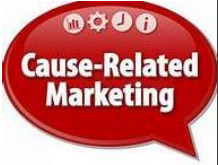 They have also demonstrated the essential ‘win win win’ of CRM through programs and partnerships such as Tesco Computers for Schools, the Cadbury Strollerthon, Barclays’ ‘Savings to Make You Smile’, BT Friends & Family Chosen Charities, Centrica and Help the Aged, Tanqueray AIDS Rides, and Persil’s ‘Go Red for Comic Relief’.
They have also demonstrated the essential ‘win win win’ of CRM through programs and partnerships such as Tesco Computers for Schools, the Cadbury Strollerthon, Barclays’ ‘Savings to Make You Smile’, BT Friends & Family Chosen Charities, Centrica and Help the Aged, Tanqueray AIDS Rides, and Persil’s ‘Go Red for Comic Relief’.
CRM’s time has come not least because of the changing expectations of consumers, who increasingly demand greater accountability and responsibility from businesses. In an environment in which there’s often little difference in the price and quality of goods available, reputation and standing for something beyond the functional benefits of a product or service is gaining ground, as brands constantly compete for customer loyalty and consumer attention.
“a commercial activity by which businesses and charities or
causes form a partnership with each other to market an image,
product or service for mutual benefit”.
But what exactly is CRM? It is defined by Business in the Community as “a commercial activity by which businesses and charities or causes form a partnership with each other to market an image, product or service for mutual benefit”. It is an additional tool for addressing the social issues of the day by providing resources and funding, but at the same time addressing business marketing objectives.
And this part of the marketing mix is no longer a stab in the dark for marketers. There is a growing body of evidence outlining its success based on research conducted for Business in the Community by Research International, and from the case study examples that companies in the UK and around the world are providing.
It may appear as if CRM has only just started getting the attention it deserves recently, but it has been in existence for centuries. Much of the recent interest stems from American Express, which is credited with coining the phrase in 1983. American Express devised a three-month promotion, which saw it donate one cent to the restoration fund for the Statue of Liberty every time a customer used an American Express card. Other elements of the campaign included a $1 donation to the fund for every new American Express account approved.
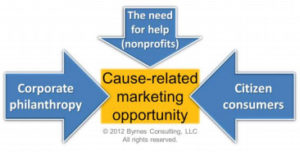 The campaign raised over $1.7m for the Restoration of the Statue of Liberty fund. The payback for American Express was that credit card use rose by 28% in the first month of the promotion, compared with the previous year, and new card applications increased by 45%.
The campaign raised over $1.7m for the Restoration of the Statue of Liberty fund. The payback for American Express was that credit card use rose by 28% in the first month of the promotion, compared with the previous year, and new card applications increased by 45%.
If CRM can influence consumer perceptions and buying habits then clearly it is a vital weapon in the marketing armory. If it can enhance corporate reputation and brand equity, increase loyalty, build sales and benefit the community at the same time, it becomes an intrinsic part of the marketing strategy.
The strength of CRM over more traditional forms of marketing is that it can provide the emotional as well as the rational engagement of the consumer. It engages the consumer’s heart as well as their mind, and thereby has the potential to build a much stronger and enduring relationship.
Customer loyalty
As Sir Dominic Cadbury, chairman of Cadbury Schweppes and founder of the Cause Related Marketing Campaign at Business in the Community, says: “Cause-related marketing should become a natural part of successful business practice because it is an effective way of enhancing corporate image, differentiating product and increasing both customer loyalty and sales.”
It’s a basic rule of business that a satisfied customer generates more revenue than a dissatisfied one. However, for sustainable business success, satisfaction is not enough, and marketers are striving to create genuine customer loyalty. The pursuit of customer loyalty is the ultimate goal of marketing, as a large increase in profit can be achieved by a small increase in customer loyalty. As such, marketers need to look for more ways to attain and retain customers.
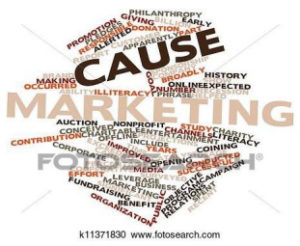 Much of Tesco’s success has come from the recognition of the need to add value, or, as its strap line puts it, ‘Every little helps’. Tesco Computers for Schools is exactly one such extra. Customers shop with Tesco, collect vouchers, give them to schools, and the schools then choose and receive computers and related equipment.
Much of Tesco’s success has come from the recognition of the need to add value, or, as its strap line puts it, ‘Every little helps’. Tesco Computers for Schools is exactly one such extra. Customers shop with Tesco, collect vouchers, give them to schools, and the schools then choose and receive computers and related equipment.
This program has had a major impact on both Tesco’s sales and image, as well as putting over £50m – worth of IT equipment in schools – the equivalent of one computer in every school in England, Scotland and Wales. This campaign is the perfect example of how fusing corporate, marketing and charitable objectives can prove to be both economically sustainable and enormously beneficial for everyone involved. Voucher redemption for the scheme remains exceedingly high, at around 65%.
Tim Mason, Tesco’s marketing director, is a CRM convert since the success of this campaign. He says: “The growing importance of building customer loyalty, enhancing the brand and providing added value as a differentiator, plus the benefit that can be gained through cause-related marketing, increasingly validates it as a core part of the marketing mix.”
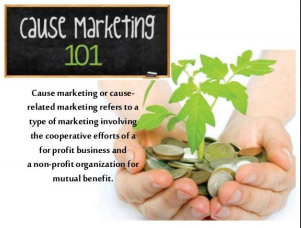 So companies are now recognizing that it is the holistic management and appreciation of all stakeholder relationships that will support the development of successful companies in the future. CRM can provide a high-profile and a positive way for brand owners to strengthen these stakeholder relationships with not only customers, but with employees, distributors, suppliers, politicians, shareholders, opinion-formers and the wider community.
So companies are now recognizing that it is the holistic management and appreciation of all stakeholder relationships that will support the development of successful companies in the future. CRM can provide a high-profile and a positive way for brand owners to strengthen these stakeholder relationships with not only customers, but with employees, distributors, suppliers, politicians, shareholders, opinion-formers and the wider community.
Because business and the wider community are interdependent, the strength or weakness of one fundamentally affects the other.
If the business world doesn’t have staff with the skills and resources to produce goods, or if the market to which the business hopes to sell its product is not able to purchase that product then, eventually that business market will disappear, as will that business. CRM gives companies a proactive mechanism to invest in the communities in which they operate. For example, in the case of Tesco and its Computers for Schools scheme, the company is helping to improve IT literacy standards for school leavers.
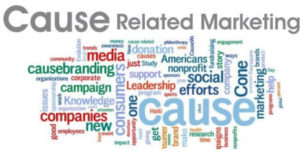 Neat values fit
Neat values fit
Some of the best CRM work has been where the cause fits neatly with the existing brand values of a company. Norwich Union demonstrated this through its partnership with St John Ambulance. This was designed to align Norwich Union more closely with its corporate brand positioning of ‘better protection’ and to generate warmth toward the company. Launched in 1996, Norwich Union funded a series of free first-aid courses for the general public run by St John Ambulance.
This ‘First Aid in the Home’ program was promoted through a television advertising campaign, which carried a hotline telephone number for enquiries and bookings. The ads showed a child at home drinking a harmful liquid. Viewers were asked what first aid they would apply in this situation and then what would have been appropriate to save the child’s life.
A branded first-aid booklet was sent out to all callers responding to the ad who were not able to attend a course. Participants received a free place on a St John Ambulance firstaid course, and those completing the course received a certificate jointly branded by Norwich Union and St John Ambulance.
Awareness of Norwich Union increased in a market where shifts are hard to come by. Research showed recognition of the TV ad was higher than ever recorded in the insurance sector. Ads in this sector usually score around 42% recognition, whereas the Norwich Union First Aid campaign scored 80%. Of those 80%, 30% agreed Norwich Union insurance offered better protection, compared with a figure of 19% before the campaign. In all, 25% said they were more likely to consider Norwich Union for an insurance policy.
“Norwich Union First Aid was a huge success for both Norwich Union and St John Ambulance,” says Thomas Cowper-Johnson, group brand manager at Norwich Union.
“We made our commercial objectives clear from the outset, and were impressed by the business-like response from the charity. The project was a long time in the planning but the results were well worth it.”
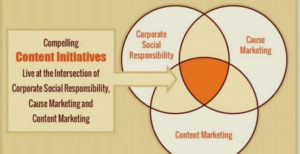 Corporate social responsibility, corporate citizenship, values, vision and ‘standing for something’ are important differentiators. A reputation or an association with human, environmental or social abuse, for instance, will seriously count against businesses in the future, and will no longer be simply ignored. Marketing directors who ignore the high consumer propensity to support products and services involved with charities and good causes, should consider that, according to MORI, one-third of the population have boycotted a company’s products on ethical grounds.
Corporate social responsibility, corporate citizenship, values, vision and ‘standing for something’ are important differentiators. A reputation or an association with human, environmental or social abuse, for instance, will seriously count against businesses in the future, and will no longer be simply ignored. Marketing directors who ignore the high consumer propensity to support products and services involved with charities and good causes, should consider that, according to MORI, one-third of the population have boycotted a company’s products on ethical grounds.
This expectation and demand by consumers is not peculiar to the UK, it is a global trend. Research conducted in the US in by Cone Communications and Roper Starch Worldwide found that nearly two-thirds of Americans, approximately 130 million consumers, reported that they would be likely to switch brands or retailers to one associated with a good cause, when price and quality are equal.
Similar research has been conducted in Australia, Italy and Belgium. The evidence is consistent and overwhelming. More than eight out of ten consumers, both in the UK and internationally, are clear that linking with a cause makes a difference. One need only consider what share of that market needs to be attracted in order to affect market share. Persil saw a 25% uplift in sales earlier this year on its ‘red nose’ packs supporting Comic Relief.
But it’s not just large companies that are realizing the benefits of this type of marketing. The winner of the 1999 Business in the Community Cause Related Marketing Award for Excellence, sponsored by Cadbury Schweppes, was the Nambarrie Tea Company, a Northern Irish company employing just 35 people. Nambarrie’s support of Action Cancer’s Breast Cancer Awareness Month campaign was a sincere and allencompassing program, involving every aspect of the business operation in a total commitment to the cause.
It included on-pack promotions and TV advertising, as well as employee support from packing to distribution. Action Cancer enjoyed a 100% increase in funds during the campaign. Brian Davis, managing director of Nambarrie Tea Company, says:” Our success demonstrates that CRM can be implemented on all levels-it is not only for big companies with big budgets. We would encourage other small companies to think laterally and creatively about the resources they have and how they could be put to good use in the communities they serve.”
Potential pitfalls
But CRM can go wrong. If, as with any aspect of marketing, it is not planned, implemented and communicated appropriately, it will fail.
A CRM partnership between McNeil Consumer Products and the Arthritis Foundation in the US produced four over-the-counter pain relief products, heavily branded with the charity’s name. The idea was that purchasers would receive a discount on the products and free membership of the charity for a year, while the discounted money would be donated to the charity. Retailers selling the brand were also involved in a range of activities promoting the products.
While this partnership appeared to offer benefits for the business, the charity, consumers and retailers, both the charity and McNeil were criticized for the association, which led to 18 US states threatening to sue the company. There were a number of problems. The ads were felt to be misleading in a number of ways, including implying that the product was new and that the charity had helped to create the products. It was also argued that the charity had compromised its ability to provide objective advice on all forms of pain relief.
There are clearly potentially contentious areas and pitfalls to watch out for in relation to all sorts of causes and issues. Programs, relationships and partnerships have to be developed professionally, methodically, thoroughly and appropriately. The danger is that there only needs to be a couple of mismanaged programs to precipitate negative stakeholder reaction and perceptions, leading to rejection and media backlash for all the partners involved. But while there are pitfalls, the rewards remain. Indeed, 72% of marketing directors think CRM is going to grow in importance in achieving their objectives in the next two to three years.
As the concept of corporate social responsibility grows and receives more attention, with leading companies developing sophisticated approaches, and as relationships in marketing are increasingly formed with a growing number of stakeholders on many different levels, cause-related marketing will become a more dominant feature. It can help build relationships internally across departments and externally through the supply chain and beyond. The challenge is for marketers and fundraisers to release this potential.
WHAT DO CONSUMERS THINK?
- 86% agree that when the price and the quality of products are equal, they are more likely to buy one associated with a cause
- 73% agree they would switch from one brand to another, price and quality being equal
- 61% agreed that they would change retail outlet for the same reason
- 86% agree that they have a more positive image of a company if they see it is doing something to make the world a better place
- When planned, implemented and communicated appropriately, causerelated marketing is supported by consumers
- Consumers call for greater efforts, on the part of the business and associated charity or cause, to raise awareness of these programs and bring them to the attention of the consumer
Sue Adkins is director of cause-related marketing at Business in the Community. She is also the author of Cause Related Marketing-Who Cares Wins.




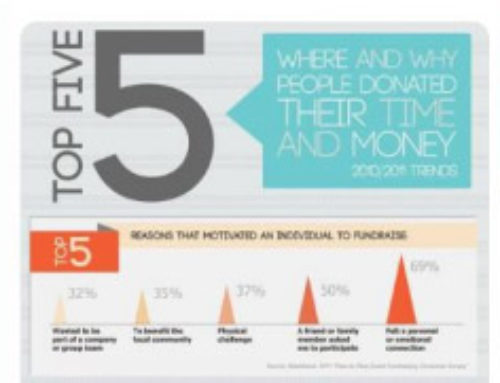
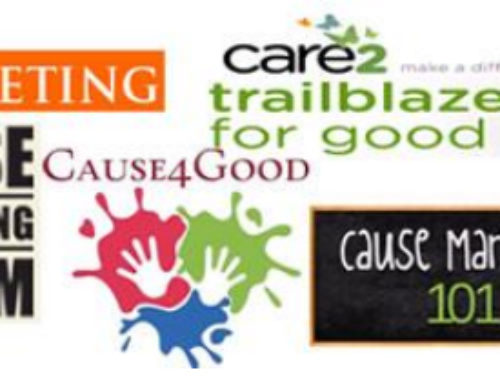
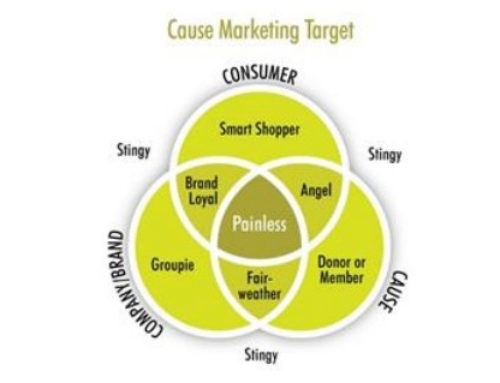
Leave A Comment